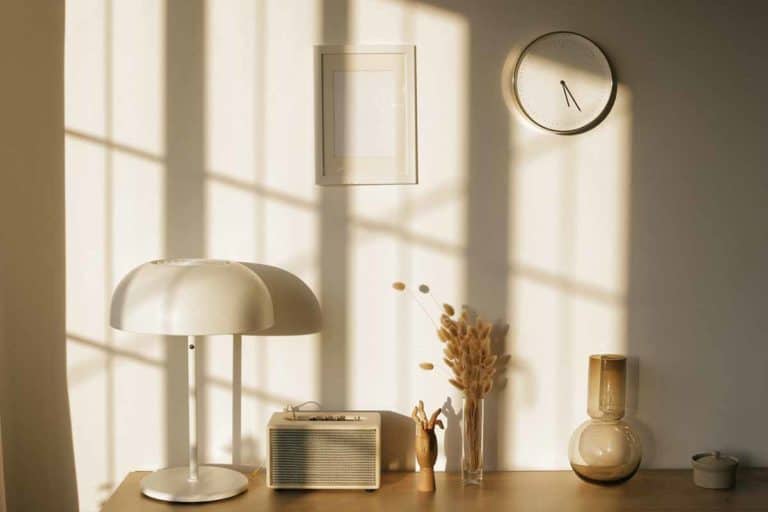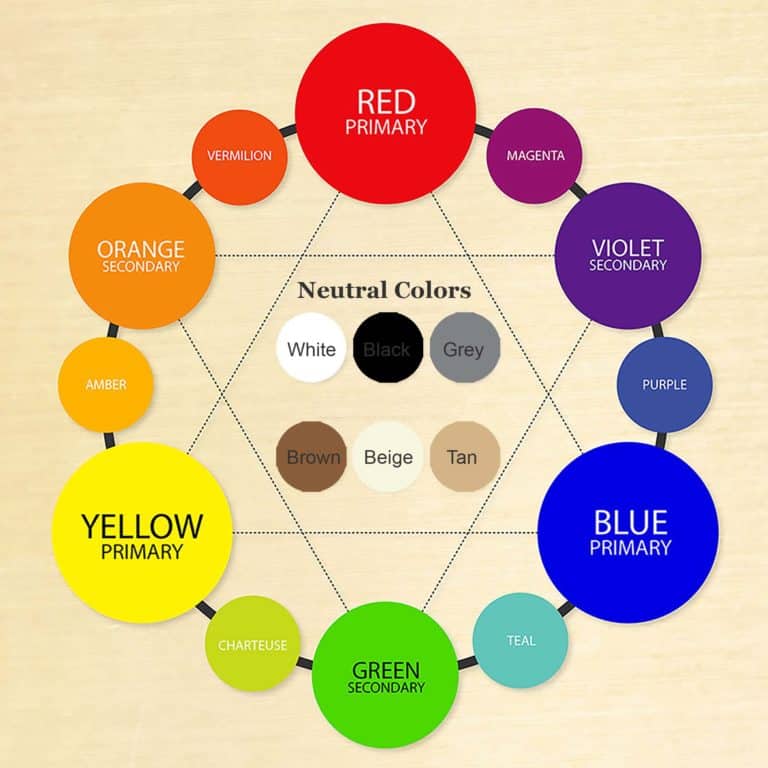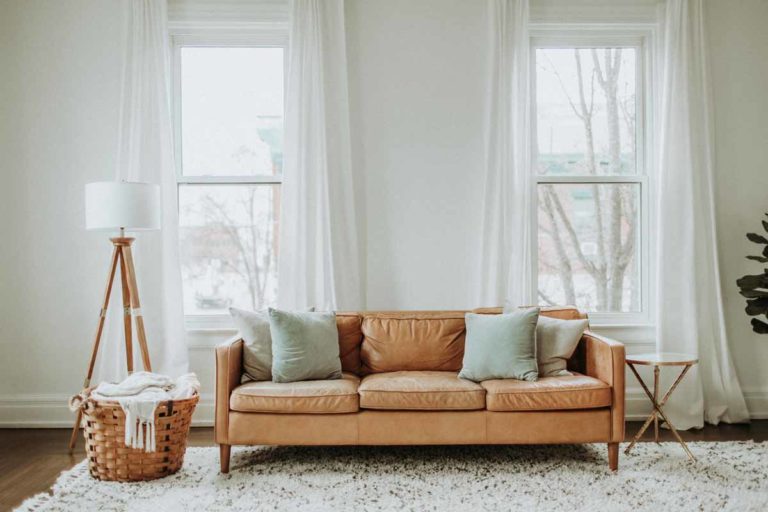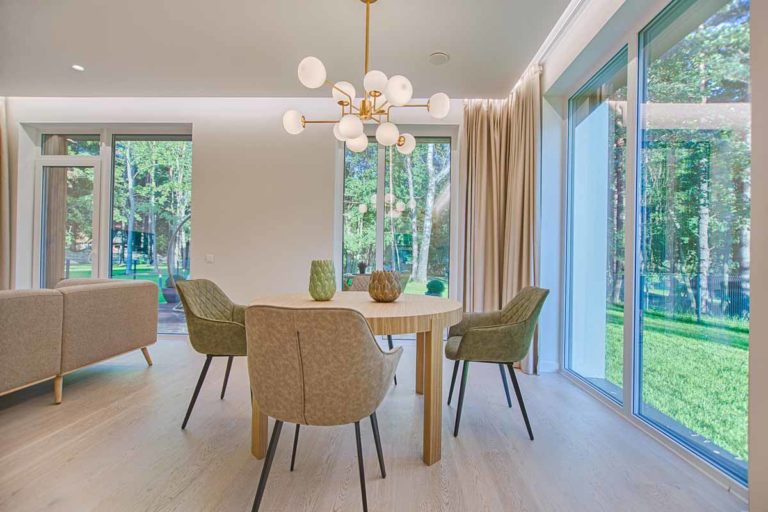What Are Neutral Colors? Neutral colors include six colors: white, black, gray, brown, beige, and tan. They can be integrated into any home design to develop versatile and elegant atmosphere.
Additionally, They can be used to create a calming or simple look in a room and are popular choices for bedrooms, living rooms and bathrooms.
However, in order to understand the meaning of neutral colors, we need first to be aware with concept of color wheel.
Table of Contents
Are You Confused About Color Wheel?
The color wheel is one of the most commonly used tools in interior design. It can help us to understand the relationships between different colors and how they work together.
A quick glance at the color wheel reveals that there are three primary colors, and three secondary colors.
Any other color can be created by mixing primary and secondary colors together.
Primary colors
Primary colors are the basis of all other colors. They are red, yellow, and blue. These colors can be mixed together to create any other color in the spectrum.
Secondary colors
Secondary colors are created by mixing two primary colors together. The three secondary colors are orange, violet, and green.
They are all made by mixing yellow and red together to make orange, blue and yellow to make green, and blue and red to make violet.
Tertiary colors
Tertiary colors are combination of primary and secondary colors. There are six tertiary colors include magenta, purple, teal, chartreuse, amber, and vermilion.
Now, after understanding the color wheel concept, we will explore the neutral colors.
What Are Neutral Colors?
Generally speaking, neutral colors are those who don’t typically evoke strong emotional responses. For this reason, they are not hot nor cold colors.
Additionally, they can’t be categorized under primary, secondary, or tertiary colors.
They are standalone as powerful selection to create a calming or harmonious effect in any space.
The main colors are white, black, gray, brown, beige and tan.
In fact, they are a littlie confusing due to that they are subjective with plenty of shades. Additionally, they have complex tones such as greige which is a mixture of beige & light gray.
White
White
It is the most versatile of the neutral colors and can be used in a variety of ways to create different effects.
Black
Black
It is the most intense of the neutral colors and can be used to create a powerful visual statement.
Grey
Gray
It is a great color that can be used in a variety of ways. It is versatile and can be paired with many other colors to create different looks.
Brown
Brown
It is a sophisticated color that can be used to create an elegant look.
Beige
Beige
It is a calming color that can be used to create a relaxing environment.
Tan
Tan
It is a cheerful color that can be used to add some brightness to a room.
How to use a neutral color scheme in your home:
Neutral colors can be very calming and relaxing, helping to create a healthy environment. They can also help to make a space look more inviting and comfortable.
When selecting neutral colors for your home, it’s important to consider both the climate and your personal style.
A neutral color scheme can be a great choice for your home because it’s versatile and timeless. Here are a few tips to help you choose the right colors:
1. Start by deciding what purpose the room will serve. A brightly-colored family room may be fun, but it may not be the best choice for a formal living room.
2. Consider your personal style. Do you prefer light and airy colors, or darker and more dramatic shades?
3. Choose a color palette that contains three to five colors. This will give you enough options to create different looks without being overwhelming.
4. Think about the natural light in the room. Bright colors can wash out in rooms with little sunlight, while darker shades can make a small space feel cramped.
5. Don’t be afraid to mix different textures and finishes together.
Many people believe that these colors can be used in any setting without clashing with other colors in the room. Neutrals can also be seen as calming colors, which is why they are often used in bedrooms and other areas where people want to relax.
Neutral colors are often underrated. They are typically seen as boring and not interesting. However, neutral color palettes have a number of advantages that make them worth considering for your next project.
Conclusion: What Are Neutral Colors?
Neutral colors are a great way to add some life to a room without taking away from its purpose. Whether you’re looking for a background for your furniture or want to spruce up an entire room, neutral colors are a great way to go.
There’s no right or wrong choice when it comes to choosing neutral colors, so feel free to experiment until you find the perfect one for your home.
When it comes to color, there are a few key neutral colors that can be used in any design. Neutral colors allow for a more versatile and cohesive design, as they can work with a variety of other elements.
Neutral colors also tend to be less distracting and can help to focus the viewer’s attention on the content of the design.












